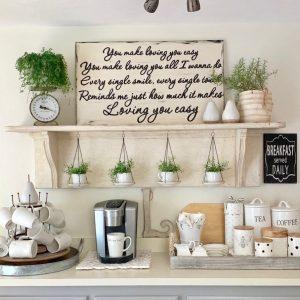When it comes to DIY projects, scales are often an overlooked tool. However, if used correctly, they can be extremely helpful in ensuring accuracy and preventing mistakes. In this article, we will discuss the different types of scales available and how to choose the right one for your project. We’ll also provide some tips on using scales effectively for optimal results!

1. Balance scales
A balance scale is a type of scale that relies on a beam and two pans to measure weight. The object to be weighed is placed in one pan, while the other pan is filled with weights until the object is balanced. This type of scale is ideal for small objects that need to be weighed accurately. Balance scales are easy to use and very accurate. They are also relatively affordable compared to other types of scales. Balance scales can only be used for small objects, so they are not ideal for larger projects. Additionally, they can be somewhat challenging to read correctly if you are not familiar with them. If you want to know more, you can go to https://awscales.com/balance-scales/ and look at their options. If you need a small, accurate scale for your DIY project, a balance scale is a great option.
2. Digital scales
Digital scales are electronic scales that use a digital display to show weight. They come in a variety of shapes and sizes, making them ideal for a variety of projects. Digital scales are very accurate and can be used for both small and large objects. They are also easy to use, making them a popular choice for many DIYers. Additionally, digital scales often have additional features such as tare weights and hold buttons that make them even more user-friendly. If you are looking for a versatile scale that can be used for both small and large objects, a digital scale is a perfect option. Also, if you are not familiar with how to read a balance scale, then a digital scale would be the best option for you.
3. Crane scales
Crane scales are used to weigh heavy objects by suspending them from a hook. They are typically used in industrial applications, but they can also be used for DIY projects. Crane scales are very accurate and can handle large weights. They are also easy to use, making them a good choice for larger projects. However, they are not as portable as other types of scales and can be expensive compared to other options. If you need to weigh a heavy object, a crane scale is the best option. Just make sure that you have enough space to set it up. If you want, there are also portable crane scales that can be used for smaller projects.
4. Platform scales
Platform scales are a great option for smaller DIY projects. They are typically less expensive than other types of scales and are easy to use. Platform scales can be used for a variety of applications, including weighing food, measuring ingredients, or calculating postage. When choosing a platform scale, be sure to consider the weight capacity that is needed. Most platform scales have a weight capacity of up to 100 pounds (ca. 45 kg), but some models can accommodate heavier loads. Also, be sure to check the size of the platform. Some platforms are quite small, which may not be suitable for larger items. Platform scales are available in both digital and analog formats. Digital scales offer more precision and tend to be more accurate than analog models. However, analog scales are often more affordable and can be easier to read.
5. Counting scales
Counting scales are perfect for small items that need to be weighed in precise quantities. They are frequently used in laboratories, pharmacies, and other professional settings. Counting scales are available in both digital and analog formats, and they typically have a weight capacity of up to 500 grams. When choosing a counting scale, be sure to consider the precision that is needed. Some models offer resolutions down to one-hundredth of a gram, while others have a resolution of only one gram. Additionally, be sure to check the size of the platform. Some models have very small platforms, which may not be suitable for larger items. If you need a scale for professional use, be sure to pick a model that is compliant with National Institute of Standards and Technology (NIST) calibration requirements.

Selecting the right scale for your DIY project can seem like a daunting task, but with so many options available, it’s easy to find the perfect model for your needs. Consider the type of scale you need, the weight capacity that is required, and the size of the platform. Then, select a model that meets your needs and budget. Good luck!




